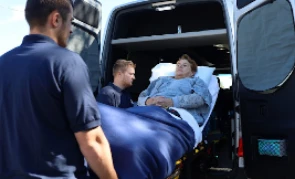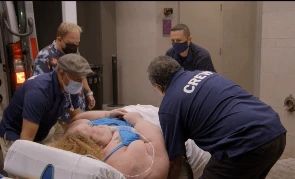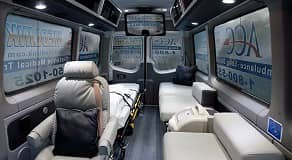Commercial medical escorts exist for the times when you need quality medical care but can’t access it where you are. They could get you on a plane headed in the direction of your preferred hospital and have trained medical staff on board with you to attend to your needs while you’re on the journey.
This service differs from other forms of non-emergency medical transportation offered by medical repatriation companies. Unlike air ambulances (which move patients via private flights) and road ambulances (which travel on land), it involves flying on a commercial aircraft and receiving whatever attention and palliative treatment may be required from healthcare professionals while on transit.
You could get this service from a regular aircraft as well as medical transportation agencies. Whatever the designation of the service provider, the key aspects of their offerings are the comfort and privacy of the flight and the quality of care from the staff both in transit and on the ground.
What if you find that you ought to get repatriated to a hospital or other healthcare facility, or there’s someone who you need to convey to such a destination in good time? What things should you expect from a company which handles this regularly? Here are several things to look out for:
Commercial medical escorts typically have a working relationship with certain airlines with which they schedule flights. This helps to make their arrangements easier; with this, they don’t have to hop between random airlines when they’re trying to secure places on flights for patients. Scheduling may take a number of days from when you contact the non-emergency transport company, so you want to arrange for your flights ahead of time.
Patients using this service are given spaces in business or first-class sections of aircraft which have enough room to accommodate single persons for more than just sitting purposes. The seats could also be adjusted into beds just in case patients need to lie down. Stretchers may be fixed for persons who are unable to sit. If the patient has trouble getting to the toilet, the staff assigned to look after them can help them with this and do so without causing them much discomfort.
A curtain demarcation which is usually present in the sections of the plane used for this purpose could give the person being transported a sense of privacy.
Monitoring equipment and medication are also usually available onboard.
Escort teams may include doctors, nurses, and paramedics who have the requisite training and experience for the sort of situations they could be dealing with on the plane and back on the ground. They may help with pain or stress-relieving treatment, administer drugs (either orally or intravenously), and provide assuring company for the patient.
Apart from picking up and landing people, medical escorts take them right to their destination and help them properly move into the hospital or center without any hitches. They can work with the personnel in those places to ensure that the settling-in process happens as smoothly as possible.

When choosing a medical transport service provider, you must ensure to choose one that not only focuses on getting you to your destination, but also prioritizes using the safest, most conducive, and most efficient sets of vehicle fleets and equipment to do the job.

ACC Medlink appeared on the TLC television network reality show “1000 LB Sisters” to transport one of the cast members from Ohio to a doctor in Kentucky. ACC Medlink, four of its employees, and the journey they took with Tammy Slaton were featured in episode 6 of season 4.

ACC Medlink is proud to announce the addition of a new line of elite medical sprinter vans to our long distance medical transport fleet. This addition will allow ACC Medlink to continue to provide superior service and outstanding care for those in need of medical transport out of state...
